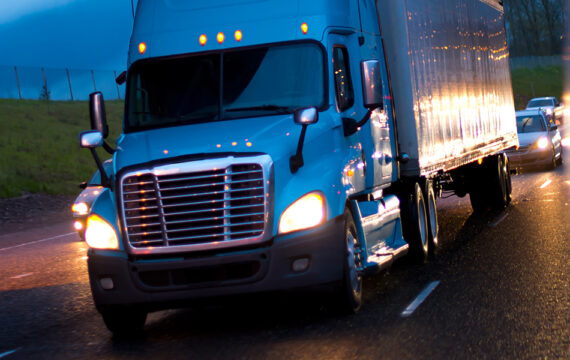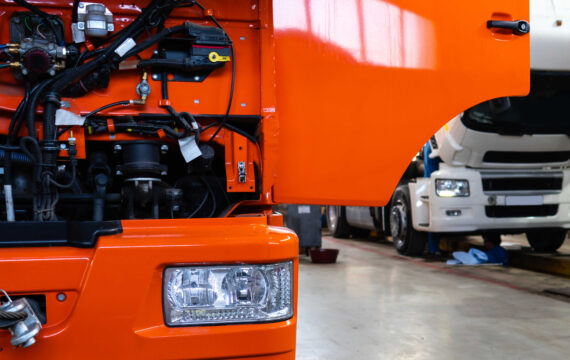Not so long ago, shipping container tracking was a semi-accurate process. It was almost impossible to oversee what happened to your containers once they left port. Today, however, technology offers a plethora of opportunities to get a reliable picture of a shipping container in real time. Many organizations are still unsure whether smart container tracking is worth the investment even though the majority of organizations have serious visibility issues in their supply chains. As of 2017, only 6% of organizations believe they have full visibility into their supply chain.
In this post, we talk about shipping container tracking technology. What opportunities does it uncover? How can it help businesses optimize their operations and see better results? Keep reading.
- What is a smart container tracking system?
- Reduced container dwell time and other benefits
- What are the benefits of smart container tracking?
- What are the challenges of implementing a container tracking system?
- How does a container tracking system work?
- What problems in logistics and supply chains does container tracking solve?
- How does technology connect to specific container logistics processes?
What is a smart container tracking system?
Shipping containers go through numerous checkpoints before they get to their destination. Still, you want to make sure your goods get through their long journey and to your customers’ doors safe and sound. That’s why cargo container tracking is necessary.
A smart container is essentially a regular container equipped with GPS tracking devices (also referred to as container security devices or cargo trackers). These are removable IoT-powered devices with built-in sensors that are attached to the container or placed in between the goods to be shipped. Such container trackers work reliably offline without an internet connection.
What data is monitored by shipping container tracking technology?
The most important information for a logistics manager relates to a container’s status and location. All the telematics data intelligence listed below can be obtained with the help of a smart container tracking system:
- Geolocation
- Geofencing and predicted ETA
- Door status (open/close)
- Temperature
- Shock detection
- Unusual activity
- Late in/out site
Reduced container dwell time and other benefits
Probably the most common operational issue that affects logistics processes around the world is container dwell time in ports and storage locations. Data by The Softransport archive suggests that delays in ports add roughly 10% to the cost of imported goods. Thanks to GPS tracking, it’s much easier to avoid them today.
GPS container tracking devices combine GPS and GSM tracking to oversee container movements throughout the shipping route. They also can extract data from satellite tracking to provide total coverage where GPS/ GSM tracking is not as reliable (usually along ocean routes).
Such tracking devices are super easy to set up and implement. They’re small, wireless, and battery powered. This means you can follow the movement of your container all the way from the moment it’s loaded until it gets unloaded at the destination.
Another considerable benefit of GPS container tracking is shock detection and door status monitoring. These features are extremely helpful when determining who’s responsible for damage or theft and can save you money on insurance.
Most of the information you can think of related to monitoring a container’s status is available from GPS container tracking devices. Live reports on container movements and delays, alerts in case of unusual activity — all this information can be used to help minimize risks and keep your supply chain up and running.
What are the challenges in implementing a container tracking system?
One major challenge in this regard is standardization. Technology is developing at an incredible pace, and today, universal standards are more needed than ever. Failure to develop such standards may cause unpleasant issues, such as:
- Lack of interoperability among devices and systems
- Overly expensive and time-consuming integrations
- Major deployment limitations due to proprietary technologies
- Prohibiting international validation of technology
- Possibility of vendor lock-in
Having common standards for smart container tracking can boost the adoption of this technology and simplify cross-border risk management for organizations around the world.
The first formal standard in this area is the Business Requirements Specification (BRS) for Smart Containers by the United Nations Centre for Trade Facilitation and Electronic Business (UN/CEFACT). It defines the data elements that are necessary for a smart container solution.
With unified smart container technology, it will be possible to ensure an accurate computer representation of a supply chain and synchronize it with the physical world. As a result, supply chains will become more transparent, secure, reliable, adaptable, sustainable, and, ultimately, connected.
COVID-19 and the increasing demand for container tracking
At the beginning of the global pandemic, the B2B logistics market almost froze. The disruption to supply chains around the world was so profound that it shook up the entire industry. Now that the situation is becoming clearer, many organizations are looking for ways to move their supply chains closer to home (namely, US companies are favoring Mexican partners over Chinese).
In B2C logistics, however, things took quite the opposite direction. During the lockdown, consumers turned to online shopping en masse. Overall demand grew exponentially not only in the quantity but in the profile of goods. To keep up with customers’ expectations, organizations were forced to switch to rapid expansion mode — a process that’s still going on and clearly requires extra resources, greater investments, and more control over shipping processes.
That’s where IoT container tracking comes in handy. Smart container tracking equipment can help organizations gather more accurate data during the unstable COVID-19 situation and have up-to-date information on changes to supply chains. Data obtained from smart containers can be used to optimize a wide range of logistics operations.
Despite the global situation, some shipping companies are offering more favorable terms for cooperation. Namely, to help their clients cope with the current crisis, MSC has partnered with TRAXENS to reduce costs for smart container and data services.
The goal of cooperation between MSC and TRAXENS is to provide their clients with control over all their containers. They can also receive notifications about container statuses (position, temperature, movements, impacts, door opening, and other indicators) at any time.
How does a container tracking system work?
Every smart container solution builds on several technological pillars:
- An active smart device attached to the container
- A cloud-based platform for collecting, processing, and sharing data
- A catalog of APIs for easy integration into different platforms
- Various communication protocols
A smart device collects data from an embedded sensor (or sensors) and additional remote sensors (if any) to monitor the environment in the container.
The installer attaches the device to the container and tests its performance to make sure it’s working properly. Next, an IoT container tracking platform receives a message with the IoT device ID, the container ID, the installer ID, the location, and a timestamp. All this data is necessary to check whether the installer has followed the procedure and the pairing process is successful.
Notification process during container tracking
![]()
Source: UNITED NATIONS ECONOMIC COMMISSION FOR EUROPE: Smart containers
As the container is en route, the device will periodically provide data on the physical conditions inside it. If the cargo owner provides information about the planned trip, it’s possible to configure the device to send smart contextualized information. Overall, the goal of the system is to ensure that every entitled stakeholder can receive data at any given moment.
What logistics and supply chain problems does container tracking solve?
If one party were responsible for the entire shipping process, container tracking would be effortless. In reality, it isn’t that simple. The shipping process is full of uncertainty.
Layers of logistics services

Depending on the complexity of the operations, shipping can be carried out by several actors, each providing a different range of logistics services.

The more layers of logistics services are involved, the harder it is to oversee supply chain processes. Every time there’s a complex arrangement with many steps, there’s a huge potential for an issue.
Another problem is the lack of reliable infrastructure, especially when it comes to shipping perishable, temperature-sensitive products such as food and pharmaceuticals. The transportation of such products is generally demanding, so the bulk of this responsibility lies on the manufacturers. But when there’s no way to ensure reliable shipping, this can result in significant financial losses.
Reducing container dwell times is crucial to improving supply chain efficiency and minimizing costs. By implementing shipping container tracking technology, organizations can:
- Speed up data gathering. Autonomous devices provide automatic updates on container locations and conditions.
- Enhance operational productivity. Smart container tracking optimizes operations and minimizes the possibility that containers will be damaged or lost.
- Reduce costs. Sensors ensure damage control, temperature control, and door open/close status monitoring, protecting goods from spoilage and theft.
- Improve safety and security. Tracking technology provides a container’s location and condition information in real time.
- Increase the quality of service. Having more control over the shipping process enables organizations to meet the growing needs of their customers.
What container tracking technology is actually solving these problems? Let’s take a closer look.
GPS to GSM or satellite
These are small tracking devices attached to the side of the container or the locking mechanisms sealing it. Such devices wake up when the ship is moving (if they have an accelerometer) or activate at set intervals, obtain GPS/GSM location data, and send it to the provider’s platform.
Short-range wireless container tracking
These are tracking systems that do not communicate directly with satellites or cellular networks. Instead, they use RFID, Bluetooth, Wi-Fi, and NFC. Such systems don’t have one specific way of working, so the organization can engineer a customized IoT system to meet their specific needs.
Artificial intelligence (AI) and machine learning
This technology is used in cargo container tracking to predict dwell time and reduce container rehandling at terminals. The biggest advantage of AI is that it can analyze data, make accurate predictions, and advise on what actions to take next.
Cloud computing
Cloud technology works more like an enabler for other technologies including IoT. It can be used to collect data and sensory inputs from other technologies to identify the location and condition of a container, assess possible bottlenecks along the container’s route, and ensure effective port processes and operations.
APIs
Container tracking software can use APIs to pass data on container statuses to a website that organizes and accurately displays all the information by container number or B/L. Companies can use this technology to get greater visibility of their goods and ensure better customer service.
How does technology connect to specific container logistics processes?
Let’s look at a practical use case. A ship makes a port call to drop containers at port X and accidentally offloads the containers of company Y. The crew doesn’t notice this mistake and takes off. If there’s no container tracking system in place, the shipment can be delayed for months. Alternatively, the containers may end up on another ship traveling to a different destination. If, however, company Y has a smart container tracking system, they will promptly identify this issue and be able to plan for the delay.
Applying container tracking technology at different stages of logistics operations
![]()
With the right combination of container tracking technologies to suit your business needs, you can maximize shipping efficiency and prevent potential mistakes.
Intellias has experience developing container tracking software for logistics companies and implementing cloud solutions, IoT tracking, and monitoring systems for their supply chains. Get in touch with our team to uncover more opportunities for your business with smart container tracking.



